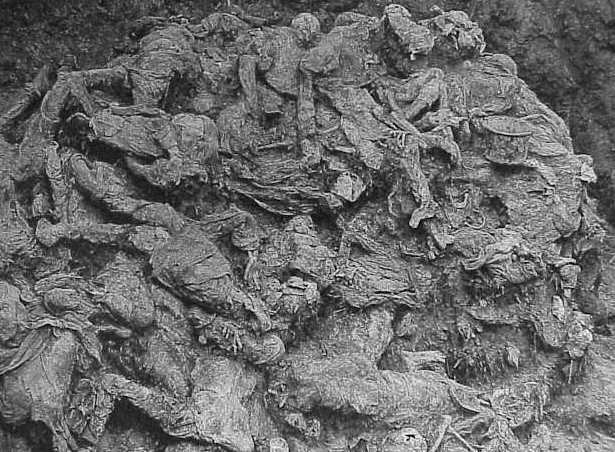Forensics 101: Forensic Challenges of Mass Grave Excavations
/
Last week we marked the 18th anniversary of the massacre of 8,100 Bosniak men and boys in Srebrenica by the Bosnian Serbs. The overwhelming majority of these victims were buried in mass graves in the remote countryside. The task for investigators following the massacre was not only finding the gravesites, but successfully excavating and identifying the victims.
The UN defines a mass grave as a location containing three or more victims who have died by extra-judicial or arbitrary executions that are not the result of an armed conflict (an extra-judicial action is one that takes place by a state or other official authority without legal process or the permission of a court).
Investigators need to determine not only time since death, but also discover any evidence of torture, the specific method of death, and the identity of the victim where possible. For many bodies, this may be a near impossible task.
Among the numerous challenges confronting researchers during mass grave excavations in Bosnia were:
- State of the remains: Victims were often not buried immediately after death because of the need to bring in heavy equipment to dig the grave. As a result, partially decomposed remains became separated and scattered within a single gravesite. The heavy machinery used to dig mass graves and to transport and bury the dead also caused damage to both the soft tissue and the skeleton, masking original trauma and complicating the investigation.
- Victim collection and labeling: During any forensic recovery, each separate body part is identified as an individual specimen. Any possible personal effects or related body parts must be labeled with related information for later association, leading to an incredibly complex identification scheme.
- Secondary and tertiary graves: A large majority of the mass graves in Bosnia were reopened, and disinterred victims moved to secondary or even tertiary graves. Since this occurred anywhere from one and four months post-mortem, soft tissue degradation was well advanced, leading to significant scattering of victims’ remains across large swathes of countryside.
- Lack of associated physical objects: Bodies were carelessly dumped into mass graves and often tightly packed to keep the site as small as possible. When personal effects were recovered, it was often impossible to determine to whom they belonged.
- Clandestine sites: Mass graves, by design, were purposely situated in difficult-to-identify locations, usually in remote areas. In addition, the killers deliberately tried to make victim ID difficult by having their victims remove all personal effects, such as wallets and jewelry, before execution.
- Sheer number of victims: Some mass graves in Bosnia contained up to 700 victims. This made victim recovery and identification a substantial task simply from a procedural and practical standpoint.
- Need for large international teams: Human rights horrors such as mass graves are very difficult tasks for investigators, frequently leading to depression and fatigue. Regular replacements are required, and the specialized nature of the work involved requires an international effort to staff a large team. It will normally take 1 or 2 investigators approximately 4 days to excavate a single victim. If a grave has hundreds of victims, it can take a team of several dozen investigators months to complete.
- Need for on-site facilities: Due to the remote nature of most mass graves, investigators must build or acquire forensic facilities for their investigation—including refrigerated storage areas, running water, decontamination areas, and sorting areas for both remains and personal effects. Provision must also be made for site security during the excavation, and accommodations for the technical staff.
- Victim identification: The majority of mass grave victims frequently lacked sufficient dental records to allow for dental identification. As a result, pathologists and forensic anthropologists had to rely on physical features and antemortem fractures to establish victim identification.

Next week we’re going to look at the practical side of mass grave excavations—how to find the graves—and then, once they are located, how to recover the victims.
Photo credit: Wikimedia Commons and Gilles Peress.



 COMPLETE!
COMPLETE! Planning
Planning